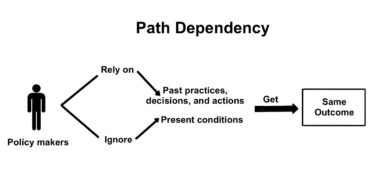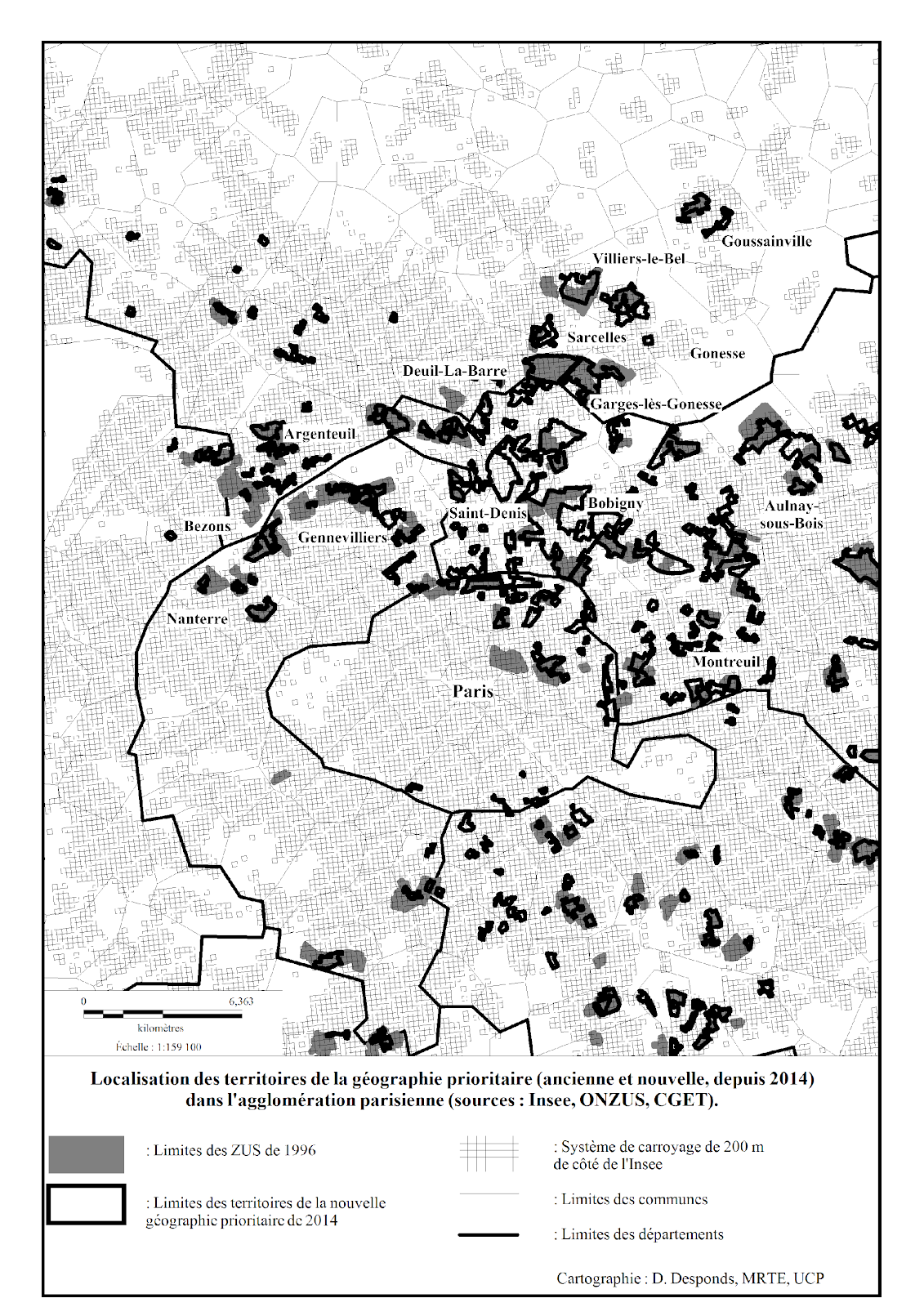Stagnation in the French Banlieues
Urban renewal policies in the banlieues implemented by different French governments over the past decades have failed to address structural problems. According to the author, in the absence of more substantial reforms, the deterioration of social conditions in the banlieues is likely to continue.
“We cannot act in place of the State for things which concern it. That's why when it intervenes, it must announce a real model. First, there must be a certain recognition. What we expect, beyond the measures, of course, is a recognition that the State has failed for several years, regardless of governments, in this area of France." That is what Mériem Derkaoui, Mayor of Aubervilliers, said after pressing charges against the State for Breach of Equality, with five other mayors, in 2019 (Brut 2020).
French urban policies—aimed at the banlieues, the suburbs, or more specifically the “cités”—exhibit aspects of path dependency by effectively relying on past practices, decisions and actions, rather than proposing innovative policies. In an attempt to change the living conditions in the banlieues—unemployment and education in particular—policies have targeted the renovation of buildings, the destruction of large complexes and the construction of individual houses, reflecting a belief that urban design ranks among the main causes of concern. Yet social integration, accomplished by means of a more equitable distribution of resources to ensure citizen empowerment, has seemed less of a priority (El Karoui 2020).

I use the concept of path dependency (see figure 1) to explain why these policies—collectively referred to as la politique de la ville—have been resistant to change and why new policies reflect more of the same (Pierson 2000; Mahoney 2000). Path dependency, however, does not provide a comprehensive explanation as to why this path came to be in the first place. To do so, it is crucial to consider French colonial history and the diversity of these neighbourhoods (Lapeyronnie 2005; Villard 2013).
Setting the stage: the longstanding issues of French banlieues
From the 1950s to the 1970s, the banlieues were characterised by the rapid and large-scale urbanisation that post-war France underwent. The government undertook construction of what were referred to as the grands ensembles, the main symbols of this period of reconstruction. Since then, debates about the problèmes urbains and their connection to urbanisme fonctionnel—study and oversight of urban projects—have proliferated as city dwellers struggled to improve their living conditions. In the 1970s, an increasing immigrant population moved into these grands ensembles, but the living conditions deteriorated, notably because of the economic downturn following the 1973 oil crisis. In 1977, urban policies emerged with the "Habitat and Social Life" operations, concerned with upgrading certain urban neighbourhoods, reducing inequalities between territories and rehabilitating HLMs (moderate rent housing blocks). During L’été chaud des Minguettes in 1981, in Lyon, the first riots of people from the banlieues started. After stealing cars in the centre of Lyon, les jeunes de la cité brought the cars back to the cité des Minguettes to be used and misused before burning them. The media’s growing interest in the malaise des banlieues placed under the national spotlight the confrontation between police and les jeunes de la cité, the latter expressing feelings of ostracism and societal neglect. At least symbolically, the 1980s were crucial years and marked a turning point in the relation between society and the cités through the rise of violent incidents and media attention, confirming their negative image. In 1995, Former president Jacques Chirac evoked the notion of ‘social fracture’; and in 2015, Prime Minister Manuel Valls talked about "apartheid" with respect to the suburbs, criticising a ghettoisation and calling for more social diversity (AFP 2015).In 2015, Prime Minister Manuel Valls talked about "apartheid» with respect to the suburbs, criticizing a ghettoization and calling for more social diversity Since then, these districts have never left the spotlight of public discussion and debates. In 2005, an unprecedented wave of urban riots following the death of two adolescents pursued by the police brought the policy of the cité back into the news. Today, more than forty years after the creation of urban policies, the high levels of poverty, unemployment and inadequate urban infrastructure are referred to as the problème des banlieues (Avenel 2009).
New labels, old practices
Table 1 shows that since 1977, various policies have attempted to tackle and address the many problems these areas encounter—poverty, unemployment, poor education in particular—through urban renovation and rehabilitation. (Boëton 2017; Profession Banlieue 2015).
The list of policies in table 1 is not exhaustive, and some measures did attempt to address the problems with a different approach—policies aimed at integration and access to education for example. However, these are few in number, and the living conditions in these areas remain precarious with no significant signs of improvement. In 2016, the poverty rate inside QPVs (Quartiers Prioritaires de la Ville) was 42%, whereas in surrounding areas but outside QPVs, it was 12% (Renaud and Sémécurbe 2016). The most recent policy, Action Coeur de Ville in 2018 (see table 1), again exemplifies a tendency to focus on building and infrastructures rather than on social experience. It follows that successive waves of policy makers have relied on past decisions and actions—the focus on urban renovation—while ignoring the present conditions of these areas—the diversity of the inhabitants, issues of integration—which ultimately results in the same outcome.
Considering French colonial history in relation to these districts is central in understanding the structural barriers faced by the citizens of the cités. The larger, metropolitan QPVs have a large number of young migrants, mostly from France’s former colonies, who are typically excluded from the formal labour market and face racial and other structural forms of discrimination. However, a small number of QPVs created in post-industrial towns are found to possess lower immigrant populations, yet much higher levels of poverty and unemployment, and thus, the situation in these cités cannot be fully accounted for by France’s colonial legacies.
One example of the inefficacy of policy measures can be seen in the replacement of the ZUS (Zones Urbaines Sensibles) by the new QPV in 2014 (see in table 1). With ZUSs, the characterisation of urban poverty by the public authorities was made upon a wide selection of criteria—too wide, according to the Ministère de l’Égalité des Territoires et du Logement (Desponds and Bergel 2017). With QPVs, on the other hand, the goal was to undertake reform on the basis of income as the single criterion, and with clarity and simplicity as its guidelines. The new method for identifying these QPV was to determine the areas in which low-income segments of the population were concentrated. Yet, abandoning the former—more complex—method of determining sensitive urban areas, in order to replace it with new methods, did not result in any concrete solutions to improve the daily lives of the citizens living in these areas. On the contrary, it highlighted a tendency to ignore the very deep-rooted, pressing issues that some areas encounter, and reinforce the idea that these new policies are only different in appearance and in name, coming back once again to the concept of path dependency. Figure 2 illustrates how little this new method shifted the state’s approach to these areas, as it is apparent that the old ZUSs and the new QPVs are essentially the same.
Both policies implemented superficial changes, rather than addressing the root causes of the problems. QPVs were established following François Hollande’s presidency campaign—2012—to uphold his socialist commitments announced during his campaign—in which he insisted on improving the situation in the banlieues. However, as mentioned in an article in Le Monde, “les ex-Zones urbaines sensibles (ZUS) n’ont changé que d’appellation. Désormais ‘quartiers prioritaires de la politique de la ville ‘ (QPV), ces zones continuent de concentrer chômage et pauvreté. ” (Laurent 2015)
Conclusion
Not only understanding, but also taking into account the diversity of France’s sensitive urban areas for policy-making is crucial in order to fulfil the goal of restoring equality in the poorest neighbourhoods and improving the living conditions of their inhabitants. A tendency to rely on urban renovation in past and more recent measures has resulted in the persistence of endemic poverty and inequality in these zones. Such districts represent a core component of French society. More people-centred—not design-centred—policies are likely to be a part of the solution to ultimately improve the lives of the banlieue’s inhabitants.
Table 1: Policies to address the issues of poverty and education in the French banlieues
| YEAR | POLICY IMPLEMENTED | EXPECTED OUTCOME |
|---|---|---|
| 1977 | Beginning of the 'Habitat and social life' operations | Aim to rehabilitate the moderate rent housing (HLM) buildings with state financial assistance. |
| 1983 | Launch of the 'Banlieue 89' mission | Aim to rehabilitate and connect the suburbs together. |
| 1984-1988 | First contracts for shared state/region plans integrating the social development of neighborhoods: 148 conventions concerning around 170 neighborhoods. | The operations mainly concerned the rehabilitation of buildings and urban planning, as well as some social actions. |
| 1990 | Speech from President Mitterrand, the president, announcing the creation of a city ministry (Ministère de la Ville). | The Ministry ensures support for territories in their development and the reduction of territorial inequalities: in this capacity, it is responsible for the policies to fight inequalities in favor of disadvantaged neighborhoods in urban areas and rural areas. |
| 1994 | First city contracts. | The scale of intervention of the city's policy extended to the entire city, keeping targeted action in the most troubled neighborhoods. |
| 1996 | Recovery pact for the city, under Alain Juppé's government, which divided the urban areas according to its difficulties. | Creation of 36 sensitive urban zones (ZUS), 15 urban revitalization zones (ZRU), and 2 urban free zones (ZFU) |
| 2000 | Law on urban solidarity and renewal, commonly known as the SRU law. | The SRU law remains best known for its Article 55, which requires cities with more than 3,500 inhabitants to have at least 20% of social housing. Its goal is also to allow for a significant improvement in the living conditions of the inhabitants and mark in depth, and in a sustainable way, the transformation of the image and perception of the neighborhoods. |
| 2003 | National Urban Renewal Program (PNRU) of the Borloo Law. | Provides €30 billion in investment over the period 2004-2008 to restructure the ZUS and, exceptionally, neighborhoods with the same characteristics. It provides for 200,000 constructions of social rental housing, 200,000 rehabilitations and 200,000 demolitions. |
| 2007 | Replacement of city contracts by the Urban Social Cohesion Contracts (CUCS). | CUCS includes a project that aims to improve daily life and promote equal opportunities for residents and better integration of neighborhoods in the city and agglomeration.
It is divided into multi-year action programs on priority fields and neighborhoods, specifying the commitments of each of the partners. The actions are grouped around five thematic axes: 1) habitat and living environment; 2) employment and economic development; 3) educational success; 4) health; 5) citizenship and crime prevention. |
| 2014 | Integration of the Priority Neighborhoods of the City (QPV). | It aims to reduce the complexity of the meshing of socially disadvantaged areas (by replacing two schemes with one and simplifying the defining criteria). |
| 2018 | "Action Coeur de Ville" | Structured around five main themes to revitalize cities suffering from 'urban decline': 1) réhabilitation/restructuration de l'habitat en centre-ville; 2) développement économique et commercial équilibré; 3) accessibilité, mobilité et connexions; 4) mise en valeur de l'espace public et du patrimoine; 5) accès aux équipements et aux services publics. |
Figures 2: Location of priority areas in the Paris region

Insee
